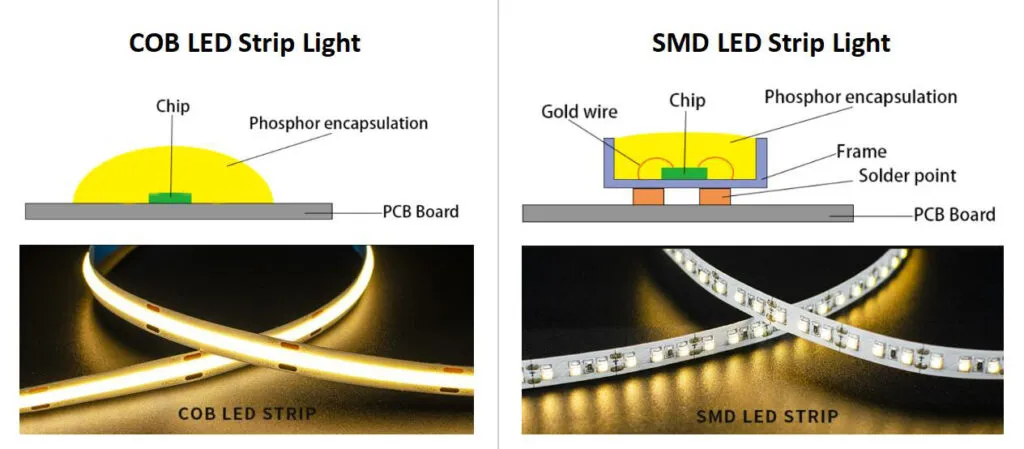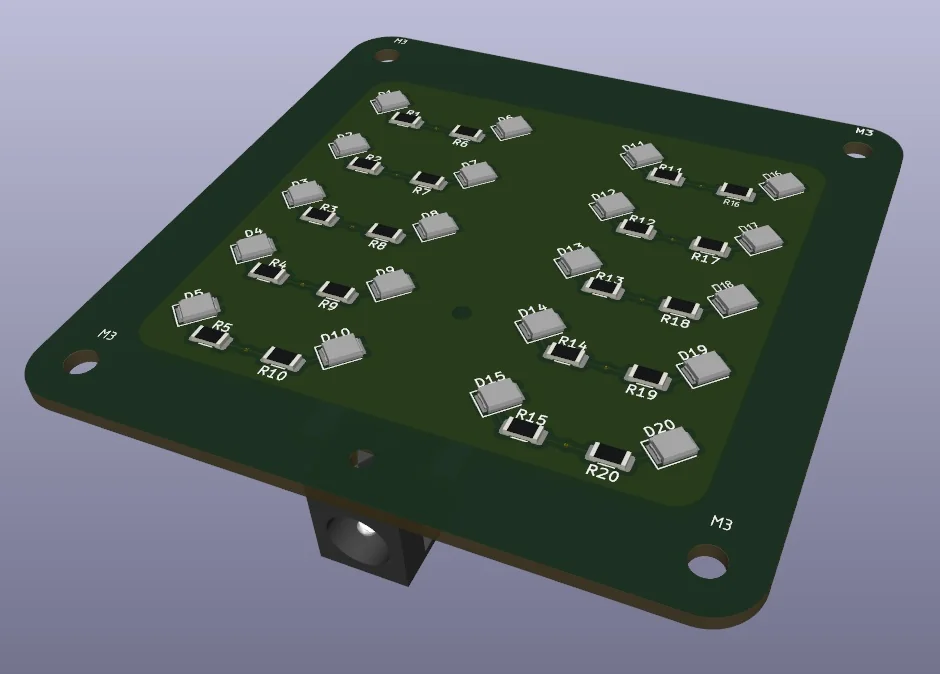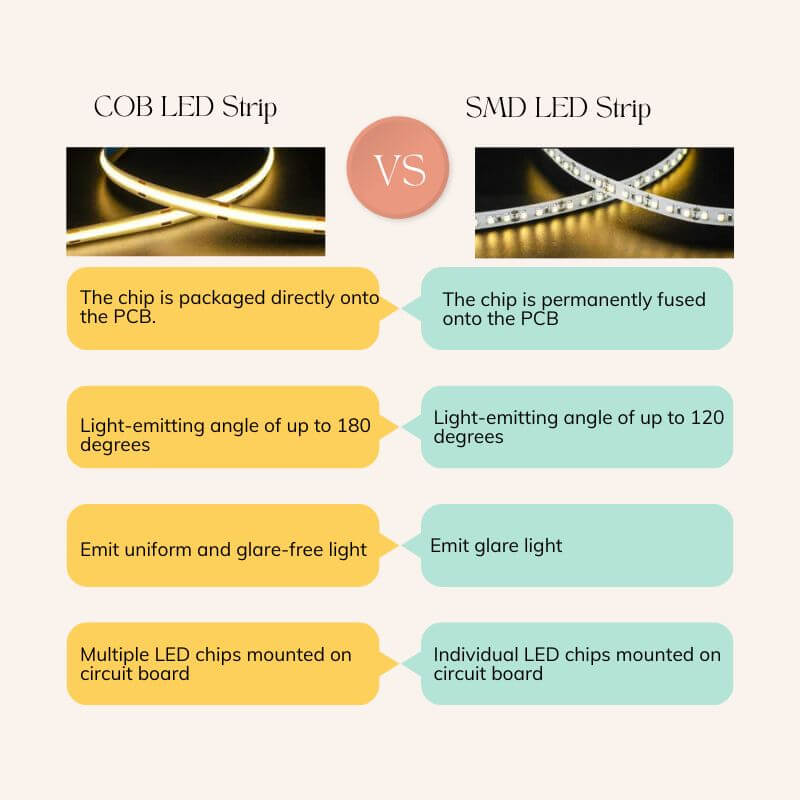When it comes to designing a printed circuit board (PCB) for lighting applications, one of the most critical decisions is selecting the right LED package. Two popular options dominate the market: Chip-on-Board (COB) and Surface-Mounted Device (SMD) LEDs. Both have unique strengths and weaknesses, making them suitable for different applications. If you're wondering which LED package is best for your PCB design, the answer depends on factors like brightness, heat management, cost, and the specific needs of your project. In this comprehensive guide, we'll dive into the details of COB LED PCB advantages, SMD LED PCB benefits, and compare COB and SMD LED performance to help you make an informed decision.
Understanding COB and SMD LEDs: A Quick Overview
Before we explore the specifics, let’s define these two LED technologies. COB LEDs, or Chip-on-Board LEDs, involve multiple LED chips mounted directly onto a substrate, forming a single module. This design creates a high-density light source with uniform illumination. On the other hand, SMD LEDs, or Surface-Mounted Device LEDs, are individual LED chips encased in a small package and soldered onto the PCB surface. Each SMD LED operates independently, offering flexibility in design and placement.
Both technologies are widely used in modern lighting, from residential fixtures to industrial displays. However, their differences in structure, performance, and application make selecting the best LED package for specific applications a crucial step in PCB design. Let’s break down the key aspects of each technology to guide your choice.
COB LED PCB Advantages
COB LEDs have gained popularity in recent years due to their unique design and performance benefits. Here are some of the standout advantages when integrating COB LEDs into your PCB design:
- High Brightness and Uniform Light Output: COB LEDs pack multiple chips into a compact area, delivering intense brightness—often exceeding 15,000 lumens from a single 25mm chip in high-power arrays. This makes them ideal for applications requiring powerful, focused illumination, such as spotlights or high-bay lighting. Additionally, the close proximity of chips results in a smooth, uniform light without visible individual points.
- Superior Heat Dissipation: One of the biggest COB LED PCB advantages is efficient thermal management. The direct mounting of chips onto a metal-core PCB or substrate allows heat to transfer quickly to a heatsink, reducing operating temperatures by up to 30% compared to other designs. This leads to better longevity and less lumen depreciation over time.
- Compact Design: Since COB LEDs integrate multiple chips into a single module, they require less space on the PCB. This compactness is perfect for designs where size constraints are a concern, such as in automotive lighting or portable devices.
- Simplified Assembly: With fewer individual components to solder, COB LEDs can streamline the manufacturing process, reducing assembly time and potential points of failure on the PCB.

SMD LED PCB Benefits
SMD LEDs have been a staple in electronics for decades, and their versatility continues to make them a go-to choice for many PCB designs. Here are the key benefits of using SMD LEDs:
- Flexibility in Design: One of the primary SMD LED PCB benefits is their modularity. Each SMD LED is a standalone unit, allowing designers to place them in various configurations to achieve specific lighting patterns. This flexibility is invaluable for applications like decorative lighting or complex display panels.
- Cost-Effectiveness for Low-Power Applications: SMD LEDs are generally more affordable for smaller-scale or low-power projects. They dominate mainstream lighting due to their wide availability and lower upfront costs compared to high-power COB arrays.
- Wide Range of Options: SMD LEDs come in various sizes (e.g., 2835, 5050, 5630) and color options, including RGB for dynamic lighting effects. This variety makes them suitable for diverse applications, from indicator lights on consumer electronics to full-color LED strips.
- Ease of Replacement: Since each SMD LED is an individual component, replacing a faulty unit is straightforward without affecting the entire lighting system. This is particularly useful in maintenance-heavy environments.

Comparing COB and SMD LED Performance
To make an informed decision, it’s essential to compare COB and SMD LED performance across critical metrics like brightness, efficiency, thermal management, and durability. Let’s analyze these factors in detail.
Brightness and Light Output
COB LEDs excel in delivering high brightness from a single point source. Their design allows for densely packed chips, resulting in concentrated light output that can reach thousands of lumens from a small area. This makes them ideal for applications like floodlights or automotive headlights where intense illumination is needed. In contrast, SMD LEDs typically produce less light per unit but can achieve comparable brightness when multiple units are used together. However, this often results in a less uniform light output compared to COB.
Energy Efficiency
Both COB and SMD LEDs are energy-efficient compared to traditional lighting, but COB often has a slight edge in high-power scenarios. Advanced COB designs, such as flip-chip configurations without wire bonding, minimize energy loss and improve luminous efficacy, often achieving up to 150 lumens per watt. SMD LEDs, while efficient (typically around 100-130 lumens per watt), may lose some efficiency due to heat buildup in densely arranged setups.
Thermal Management
Heat dissipation is a critical factor in LED performance and lifespan. COB LEDs have a clear advantage here, as their direct attachment to a substrate or metal-core PCB allows for efficient heat transfer. Studies suggest that COB setups can maintain lower junction temperatures, extending lifespan by up to 30% compared to SMD designs under similar conditions. SMD LEDs, with their multi-layer heat path (chip to housing to solder to PCB), often trap more heat, accelerating lumen depreciation over time.
Durability and Lifespan
Thanks to better heat management, COB LEDs generally offer a longer lifespan, often exceeding 50,000 hours in optimal conditions. SMD LEDs also have impressive longevity (around 30,000-50,000 hours), but their durability can be compromised in high-density arrangements where heat buildup is an issue. Proper PCB design and heatsinking can mitigate this for both types.

Selecting the Best LED Package for Specific Applications
Choosing between COB and SMD LEDs ultimately depends on the specific requirements of your project. Here are some common applications and the best LED package for each:
- High-Power Lighting (e.g., Streetlights, Stadium Lighting): COB LEDs are the preferred choice due to their high brightness, uniform output, and superior heat dissipation. Their compact design also reduces the need for large fixtures.
- Decorative and Flexible Lighting (e.g., LED Strips, Holiday Lights): SMD LEDs shine in this category thanks to their modularity and availability in various colors and sizes. They allow for intricate designs and are cost-effective for smaller-scale projects.
- Display Panels and Signage: For applications requiring precise control over individual pixels, such as digital billboards, SMD LEDs are ideal. Their independent operation enables dynamic color changes and patterns.
- Automotive Lighting: COB LEDs are often used for headlights and high-intensity lamps due to their focused brightness and compact size, while SMD LEDs are common in interior lighting and indicators for their versatility.
- Portable Devices (e.g., Flashlights, Wearables): COB LEDs are a great fit for compact, high-output needs, while SMD LEDs may be better for low-power, multi-point lighting in smaller gadgets.
LED PCB Design Considerations for COB vs. SMD
Designing a PCB for LEDs requires careful planning to ensure optimal performance and reliability. Here are some key considerations when working with COB and SMD LEDs:
Thermal Management
For COB LEDs, prioritize a metal-core PCB or a substrate with high thermal conductivity (e.g., aluminum with a thermal conductivity of 200 W/m·K) to dissipate heat effectively. Incorporate a robust heatsink design to handle the high power density. For SMD LEDs, ensure adequate spacing between components to prevent heat buildup, and consider thermal vias to transfer heat to the opposite side of the board.
Power Supply and Current Handling
COB LEDs often require higher current and voltage due to their multi-chip configuration. Ensure your PCB traces are wide enough (e.g., at least 0.5mm for currents above 1A) to handle the load without excessive voltage drop. SMD LEDs, with lower individual power needs, may require more complex circuitry if multiple units are used, so plan for balanced current distribution to avoid uneven brightness.
Footprint and Layout
COB LEDs have a smaller footprint, but their high-density design demands precise alignment and minimal solder defects. Use a stencil with accurate aperture sizes during assembly to ensure proper solder paste application. SMD LEDs, being individual components, require more PCB space in dense arrangements, so optimize the layout to minimize signal interference and maintain clean soldering points.
Optical Design Integration
For COB LEDs, consider integrating secondary optics (like lenses or reflectors) directly into the PCB layout to focus or diffuse the intense light output. SMD LEDs may need individual optics per unit, which can complicate the design but offers more control over light distribution.
Cost Considerations: COB vs. SMD
Budget is always a factor in PCB design. COB LEDs typically have a higher upfront cost due to their advanced manufacturing process and high-power capabilities. However, their longevity and efficiency can offset this over time, especially in high-usage applications. SMD LEDs are generally more affordable initially and easier to source, making them a cost-effective choice for projects with lower brightness needs or shorter lifespans.
Conclusion: Making the Right Choice for Your PCB Design
Deciding between COB and SMD LEDs for your PCB design comes down to understanding your project’s specific needs. If you require high brightness, uniform light, and excellent heat management, COB LEDs offer significant advantages, particularly for industrial or high-power lighting. If flexibility, cost savings, and versatility are priorities, SMD LEDs provide a reliable solution for a wide range of applications, from decorative lighting to complex displays.
By carefully considering factors like thermal management, power requirements, and layout constraints, you can optimize your PCB design for either technology. Whether you’re leveraging COB LED PCB advantages or capitalizing on SMD LED PCB benefits, the right choice will enhance your product’s performance and longevity. Take the time to evaluate your application’s demands and design constraints to ensure a successful outcome.
 ALLPCB
ALLPCB







